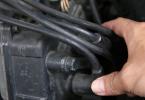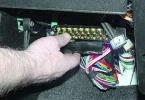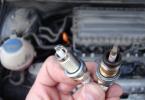Car owners with decent experience, who know how to unscrew the crankshaft pulley, cope with this task quite quickly - 25-30 minutes at most. And I must say that nothing military is expected in this procedure with the proper skill and some friendship with the instrument. However, people who have not yet encountered such a problem often do not know from which side to approach the solution of the issue.
Of course, the instructions for the car describe the dismantling process, but in most cases it is so indistinct (and without mentioning the difficulties accompanying the process) that this description can be considered absolutely not informative.
The main problems that a novice auto mechanic cannot solve: fixation of the crankshaft itself (it turns out of hand, like a living and very harmful organism); how to get to the retainer (it is located extremely inconvenient from the point of view of the one who is engaged in dismantling); fastening tightly, in which you already want to jump over the stop bolt so that it will fly off once and for all.
How to unscrew the crankshaft pulley, while spending a minimum of effort? Note at the same time that it can be attached in two ways. On front-wheel drive cars, fixing is usually done with a bolt, on rear-wheel drive cars, with a nut. In four-wheel drive vehicles, the ratio is 50:50. In any case, by looking under the bottom, you can easily determine what exactly you have to tinker with.
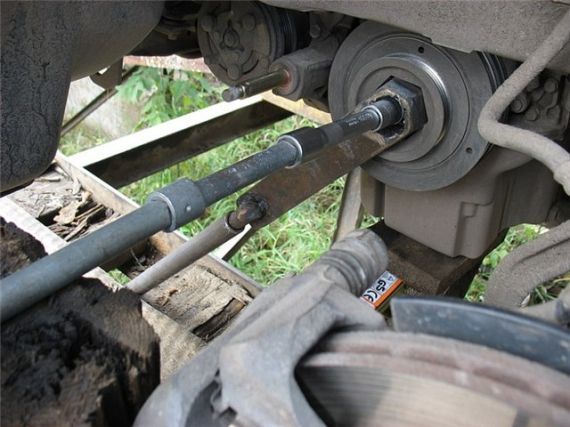
Causes of problems
Already at the factory, installing the crankshaft, the assemblers tighten it with special zeal. The purpose of such an impressive effort is to prevent the self-unwinding of the fasteners in the process of communication between the car and the road. Since if he flies off on the way, resuscitation of the car will require significant costs and money and time.
To enhance the organic interaction of the crankshaft with the rest of the body, additional tightening of the fasteners is provided during the operation of the engine. And when you take into account the spontaneous and inevitable processes like rusting, sticking and coking, it becomes clear that moving a bolt / nut from its home is not easy. Today we will just try to talk about this in more detail.
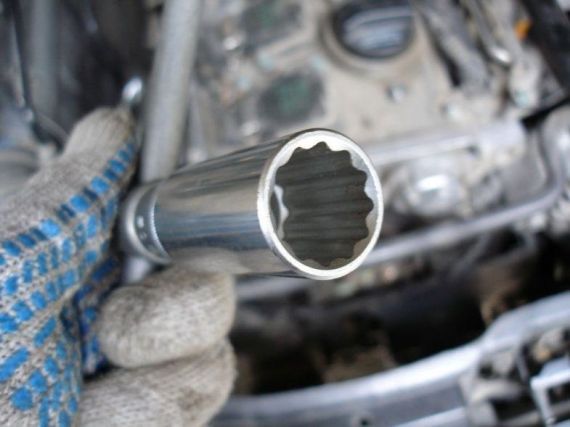
Remove the bolt
Since the pulley is attached to it in a car with front-wheel drive, it is placed perpendicular to the axis of the car, and in the beginning it will be necessary to get to it - frankly speaking, not an easy task.
The order of manipulations is as follows:
- The front end on the right is raised by a jack. It is attached to a tragus or stump - which is in your garage - so that the car itself stays stable during repair work;
- The engine shield is removed to prevent dirt from entering the motor, air filter and generator belt;
- After gaining access to the clutch block, the plug is removed - this is necessary to temporarily fix the crankshaft;
- The flywheel is jammed with a pry bar;
- Take a socket head with an extension and a lever. Its size is selected in advance. The head is put on the bolt and rotated until the final twist. If the bolt is stubborn, the lever arm gradually increases;
- The assembly is done in the same way, only in reverse order.
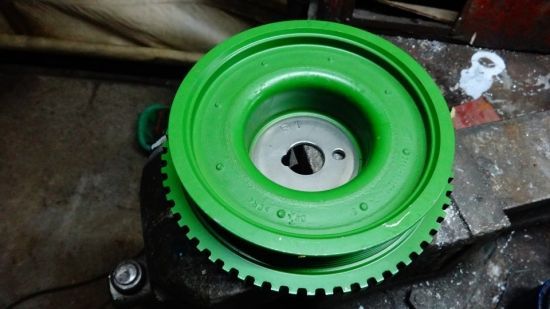
Remove the nut
Several other tools will be needed here: a lever with an extension (a fairly long segment, for example, pipes, can be used as it) and a socket or attachment wrench for 36 or 38 - depending on the diameter of the nut on your car. For starters, you can simply try to twist it. If she strongly disagrees, the transmission shifts to neutral, the candlesticks are removed, the key with the lever rests against something stationary - the floor or. We turn on the ignition so that the impulse goes. After such manipulations, the nut flies off instantly.
Even if you know how to unscrew the crankshaft pulley and know how to do it, it would be nice to make your life and the process of such dismantling easier. Our cunning people have developed a device that many car owners who do not shy away from tinkering with iron have. It looks like a nut connected to a stud and equipped with several grippers (usually 2-3 of them).
The stud rests firmly on the center of the crankshaft, the grips are brought under the edges of the pulley, and the device rotates clockwise. Even the most stubborn fasteners that have dried on to the crankshaft can be unscrewed with such a puller quickly and effortlessly.
